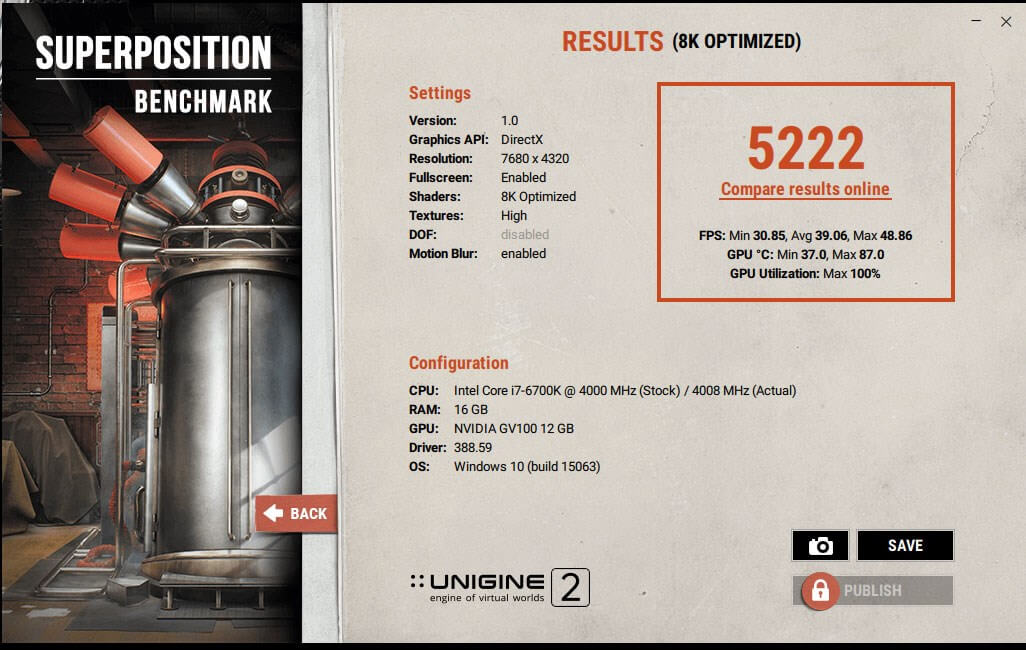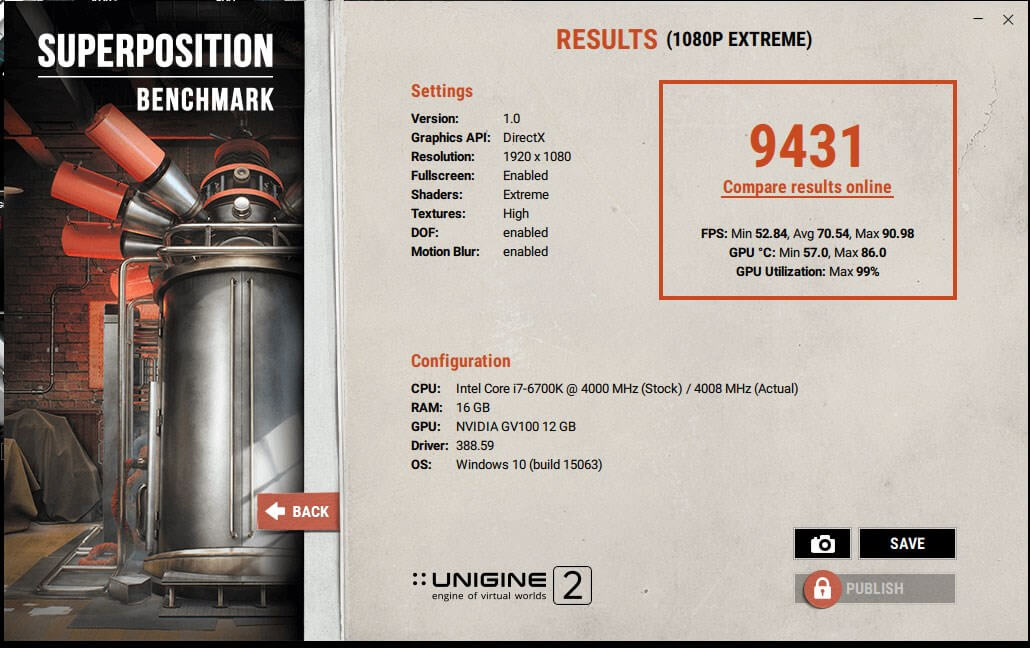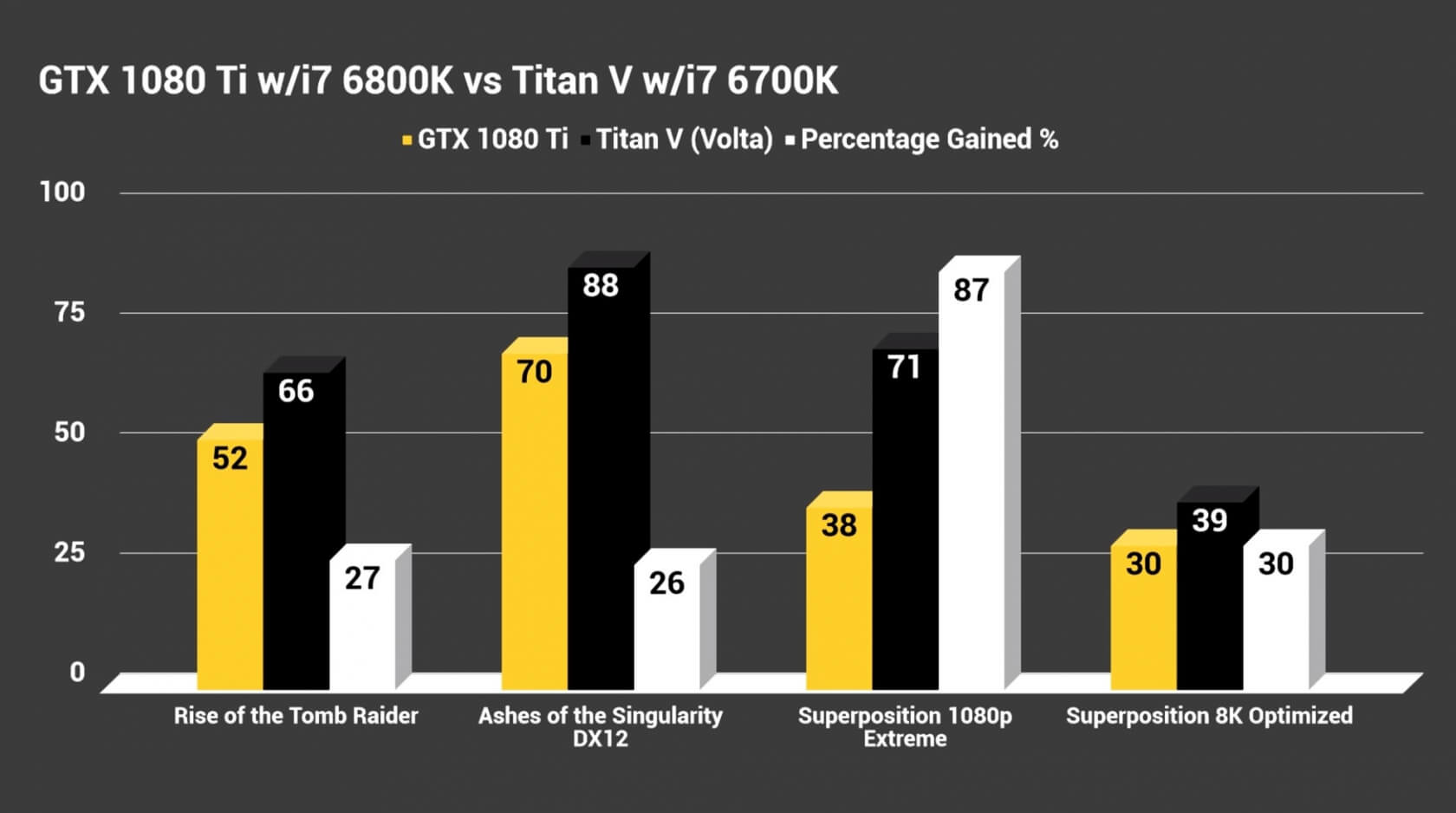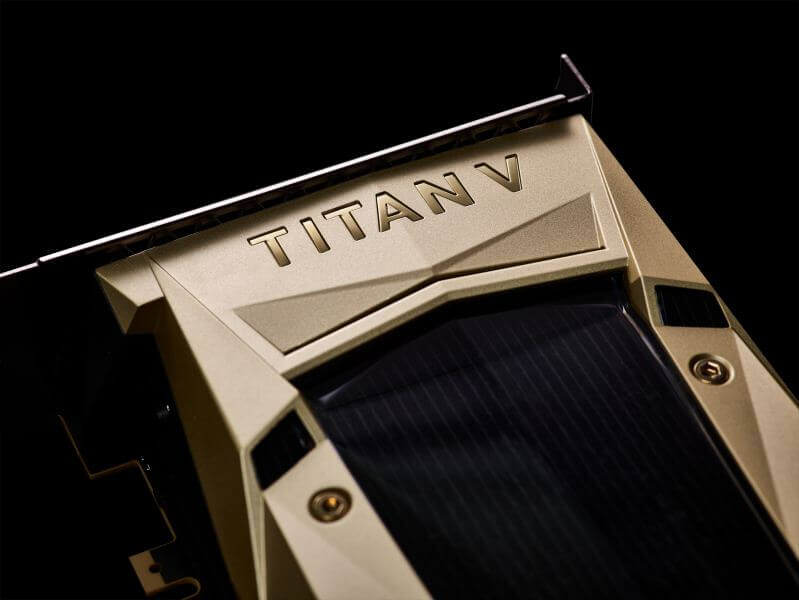Friday brought the unexpected news that Nvidia had launched "the most powerful PC GPU ever created," the Titan V. While this $3000, Volta-based GPU is aimed at researchers, developers, and scientists working in the fields of AI and machine learning, we're more interested in its benchmark scores and game performance. Thanks to Redditor MrOmgWtfHaxor, we now know how it stacks up against the competition.
To recap, the GV100-powered Titan V, which is fabricated on a new TSMC 12-nanometer FFN high-performance manufacturing process, features 110 teraflops of raw horsepower, 21.1 billion transistors, 12GB of HMB2 memory, 5120 CUDA Cores, and 640 tensor cores.
None of these benchmarks are official, of course, so we can't guarantee their authenticity. The 3DMark Fire Strike results have since disappeared, but they showed the Titan V scoring 32,774 while running at stock clocks and using Nvidia's latest 388.59 WHQL drivers. When overclocked by 170MHz, the score went up to 35,991. The Titan Xp and GTX 1080 Ti, by comparison, normally hit around 28,000.
Next up is Unigine Superposition. The GPU scored 5222 in the 8K Optimized preset and 9431 points with the 1080p Extreme preset. Overclocker Kingpin managed to get a GTX 1080Ti clocked at 2581MHz to reach a score 8642 in the latter benchmark, and that was using liquid nitrogen.


We also got to see how the Titan V fared when it comes to games. Even though it's not really a 'gaming card,' it was still pretty far ahead of the GTX 1080 Ti. Using the highest settings and running in 1440p, the Titan V averaged 66fps in Tomb Raider, 158fps in Gears of War, and 88fps in Ashes of the Singularity. YouTube channel Joker Productions made the comparison graph below, which shows the new Titan to be at least 26 percent faster than the 1080Ti, though it is over $2000 more expensive.

The results aren't too unexpected for a card that isn't primarily designed for gaming, but it does give an idea of what to expect when Volta-based GeForce cards arrive, or should that be if they arrive. Rumors have been circulating that Nvidia might skip Volta in favor of Ampere for its next generation of consumer gaming GPUs.
